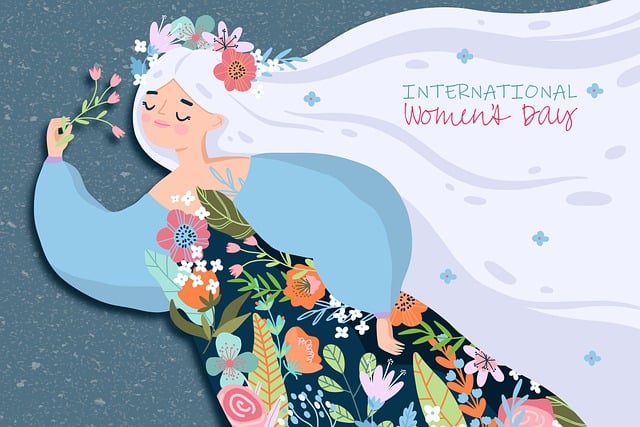
Happy International Women’s Day everyone!
For over 100 years, feminists worldwide have celebrated International women’s day, every year on the 8th of March as a centre point in the women’s rights movement. It sheds light on issues that are prevalent in today’s society, such as gender equality and violence and abuse against women.
The History
The earliest version of international women’s day was organized by the Socialist Party of America in New York City on the 28th of February 1909. This inspired German political representatives to propose a special women’s day, in 1910. After women gained Suffrage in Soviet Russia, in 1917, international women’s day was made a national holiday on 8th March. The holiday was predominantly associated with far-left movements and governments until its adoption by the global feminist movement in the late 1960s and from there on out International Women’s Day became a mainstream global celebration.
2023: DigitALL: Innovation and Technology for Gender Equality
Since the start of computing till the present day, women have made untold contributions to the digital world which is becoming increasingly important. Their accomplishments have been against the odds, as the digital world neither welcomed nor appreciated female contributions, as women make up only 22% of artificial intelligence workers across the world.
The abuse women go through is heartbreaking. The online organisation UN Women surveyed female journalists from 125 different countries and found that 73% have suffered online violence in the course of their work.
Official United Nations Themes
| 1996 | Celebrating the Past and Planning for the Future |
| 1997 | Women and the Peace Table |
| 1998 | Women and Human Rights |
| 1999 | World Free of Violence against women |
| 2000 | Women United for Peace |
| 2001 | Women and Peace: Women Managing Conflicts |
| 2002 | Afgan Women Today: Realities and Opportunities |
| 2003 | Gender Equality and the Millennium Development Goals |
| 2004 | Women and HIV/AIDS |
| 2005 | Gender Equality Beyond 2005, Building a More Secure Future |
| 2006 | Women in Decision-making |
| 2007 | Ending Impunity for Violence Against Women and Girls |
| 2008 | Investing in Women and Girls |
| 2009 | Women and Men United to End Violence Against Women and Girls |
| 2010 | Equal Rights, Equal Opportunities: Progress for All |
| 2011 | Equal Access to Education, Training, and Science and Technology: Pathway to Decent Work for Women |
| 2012 | Empowered Rural Women, End Poverty, and Hunger |
| 2013 | A Promise is a Promise: Time for Action to End Violence Against Women |
| 2014 | Equality for Women is Progress for All |
| 2015 | Empowering Women, Empowering Humanity: Picture it! |
| 2016 | Planet 50-50 by 2030: Step it Up for Gender Equality |
| 2017 | Women in the Changing World of Work: Planet 50-50 by 2030 |
| 2018 | Time is Now: Rural and Urban Activists Transforming Women’s Lives |
| 2019 | Think Equal, Build Smart, Innovate for Change |
| 2020 | “I am Generation Equality: Realizing Women’s Rights” |
| 2021 | Women in Leadership: Achieving an Equal Future in a COVID-19 World |
| 2022 | Gender Equality Today for a Sustainable Tomorrow |
| 2023 | DigitALL: Innovation and Technology for Gender Equality |
Women Who Changed the Digital World
Ada Lovelace: The world’s first computer programmer. Her mathematical talent shone through her skills and interests in machines which lead to a working relationship with Charles Babbage. It was Lovelace’s notes on the Analytical Engine that Alan Turing used as a form of inspiration for his work on the first modern computer in the 1940s
Grace Hopper: The esteemed computer scientist. Undoubtably Admiral Hopper is famous in the tech world for being a computer scientist, and one of the first computer programmers. Her work led to the development of an early programming language (COBOL), and Hopper recorded the worlds first ever real computer bug.
Hedy Lamarr: The inventor of WIFI. Hedy was a self-taught inventor and film actress, who was awarded for her “Secret Communication System”. The frequency hopping system was intended as a way to set radio-guided torpedoes during the war, but this idea eventually inspired WIFI, GPS and Bluetooth technology that we use every day.
Annie Easley: The NASA rocket scientist. Easley was a pioneer for gender and racial diversity in STEM, inevitably paving the way for women and people from different ethnicities. Her vital work on the Centaur rocket project while at NASA set out the foundations for space shuttle launches in the future.
Radia Perlman: The mother of the internet. Perlman’s inventions of the algorithm behind the Spanning Tree Protocol, which was essential in making the internet possible.